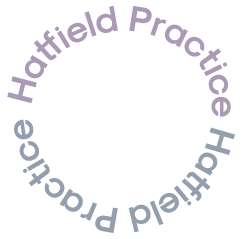Professionalism and Safety Information for GPs
To qualify, an osteopath must study for four to five years for an undergraduate degree. This is similar to a medical degree, with more emphasis on anatomy and musculoskeletal medicine and includes more than 1,000 hours of training in osteopathic techniques. By law, osteopaths must register with the General Osteopathic Council (GOsC). It is an offence for anyone to call themselves an osteopath if they are not registered. The British Medical Association’s guidance for general practitioners states that doctors can safely refer patients to osteopaths.
What we do
Although osteopaths treat many conditions, most people think of us as ‘back specialists’. Back pain is what many osteopaths treat a lot of the time. Osteopathic treatment does not target symptoms only but treats the parts of the body that have caused the symptoms. Osteopaths have a holistic approach and believe that your whole body will work well if your body is in good structural balance, Imagine, for example, a car that has one of its front wheels not quite pointing straight. It may run well for a while, but after a few thousand miles, the tyre will wear out. You can apply this example to the human body, which is why it is so important to keep the body in good balance. We use a wide range of techniques, including massage, cranial techniques (sometimes referred to as ‘cranial osteopathy’) and joint mobilization and this breadth of approach allows us to focus on every patient’s precise needs.
Osteopaths assess and treat people of any age from the elderly to the newborn and from pregnant women to sports people.
How we do it
Your medical history
Before we start to treat you, we will make a full medical assessment. We take time to listen to you and ask questions to make sure we understand your medical history and your day-to-day routine. We’ll ask you about things like diet, exercise and what is happening in your life, as these may give clues to help our diagnosis.
We may feel your pulse and check your reflexes. We may also take your blood pressure and refer you for clinical tests, such as x-rays, if we think you need them.
Your posture
We usually look at your posture and how you move your body. We may also assess what happens when we move it for you and see what hurts, where and when.
Trouble areas
Using touch, we may also find the areas which are sensitive or tight and this helps us to identify what’s going on.
When we have done this, we can diagnose your condition. We may sometimes feel that osteopathy is not appropriate for you and refer you to your GP or another specialist such as an orthopaedic surgeon.
Your treatment
Osteopaths use a wide range of gentle manipulations, depending on your age, fitness and diagnosis.
Treatment is different for every patient but may include techniques such as different types of soft tissue massage and joint articulation to release tension, stretch muscles, help relieve pain and mobilise your joints.
Sometimes, when we move joints you may hear a ‘click’. This is just like the click people get when they crack their knuckles.
We may discuss exercises that you can do to improve your posture and movement in your workplace and everyday life.
Conditions we treat
The most common conditions that we treat are:
• back and neck pain
• shoulder and arm problems
• pelvis, hip and leg problems
• sports and other injuries
However, patients have found osteopathy helpful for many other conditions. If you want to find out more, any osteopath will be happy to talk to you.
Q&A
What should I wear?
As with any medical examination, you will probably be asked to undress to your underwear, so please wear something you are comfortable in.
Can I bring a friend or relative?
Yes – if you wish, you can have someone present throughout your consultation and treatment.
Does it hurt?
Some soft tissue treatment may cause discomfort during treatment. Your osteopath will tell you what to expect, and will want you to let them know if you are in pain. You may feel a little stiff or sore after treatment. This is a normal, healthy response to the treatment.
Do I need to see my doctor first?
You do not need to see your doctor first if you are paying for your own treatment. However, some insurance companies require you to see your doctor first. Osteopathy is available on the NHS in some areas – and national guidelines say it should be available everywhere for low back pain.
How much does treatment cost?
The costs of treatment vary from practice to practice and across the country – make sure you ask before booking
How many treatments will I need?
The number of treatments you need depends on the condition and person we are treating. We aim to keep your appointments to a minimum. Your osteopath will be able to tell you within a short period of time whether they can treat you or if they need to refer you to someone else.





